Asturias: Spain’s northern sliver of Ma Nature’s best work
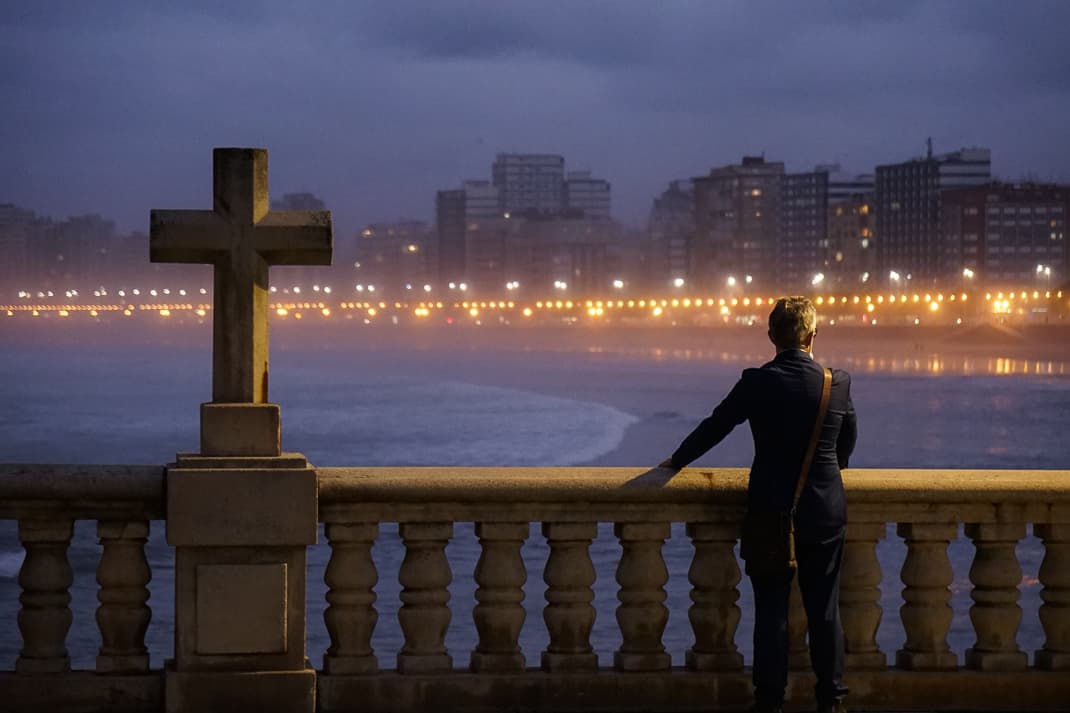
GIJON, Spain — The broad stretch of golden, spotless sand curved gently to the horizon. The long string of street lamps illuminated the beach like fireflies in formation, their lights reflecting off the tide pools left by the receding sea.
It was empty, of course, not just because the sun had set but this is September in Northern Spain. The water temperatures make the Bay of San Lorenzo seem like another planet away from the balmy Mediterranean in Andalucia to the south. During the day, I only saw hearty surfers in wetsuits risking terminal sterility.
Beautiful urban beaches are hard to find. The list is longer for Best Bars in Bhutan. Rio de Janeiro has the most beautiful. Its massive skyline provides the most dramatic backdrop to the long stretches of sand and surf. San Diego’s are picturesque in their raw starkness.
Add Gijon to the list.
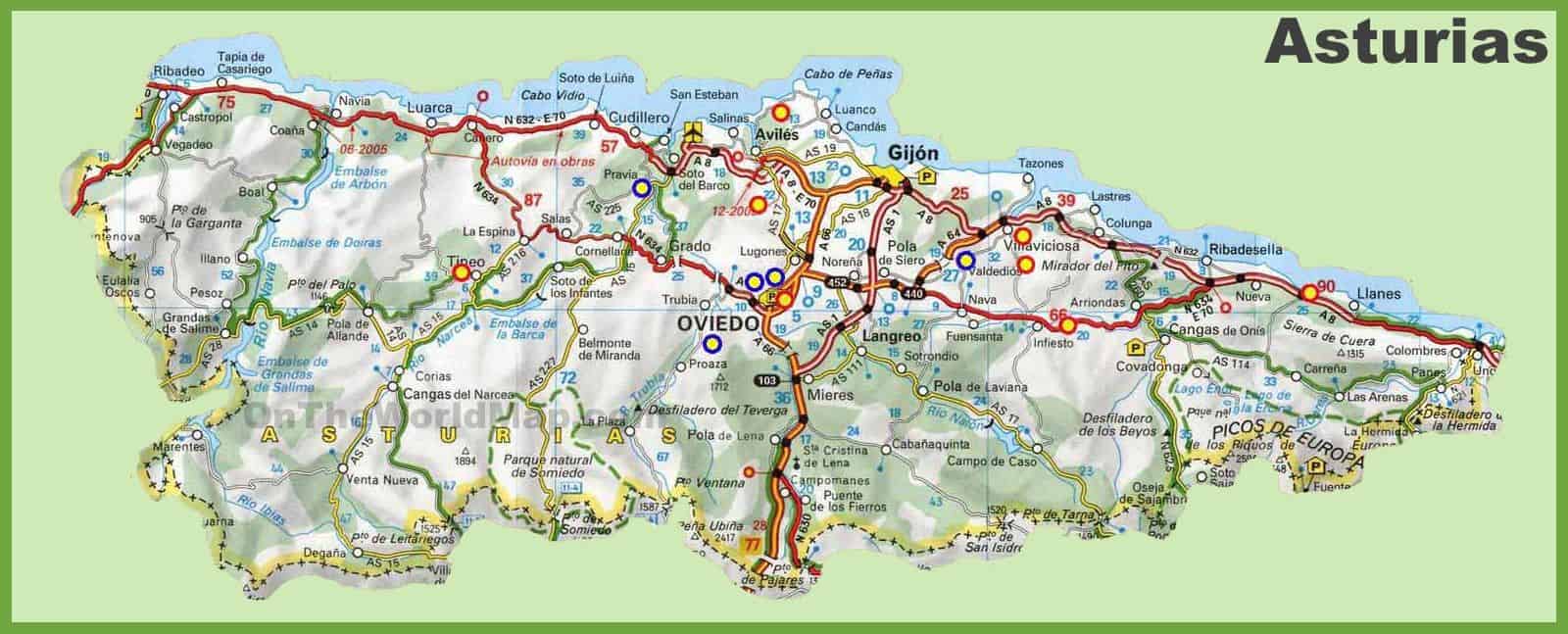

You never sit back and dream of going to the beach in Gijon, Spain? Don’t feel bad. Not many others have, either. At least, those outside Spain. The Spaniards know it. They made up more than 80 percent of the 2.3 million tourists who visited in 2019. This is a regular destination for savvy Spanish travelers trying to avoid the British invasion in Andalucia, the Italian mobs in Mallorca and the American tour groups in Barcelona and Madrid.
Gijon (pronounced ghee-HOAN) is the largest city in Asturias, the slice of beaches, forests and mountains that has slipped through the cracks of Spanish tourism. Spain’s smallest region is 20 percent smaller than Connecticut. Asturias’ 1 million people occupy a sliver of land stretching 250 miles along the northwest coast of Spain, about where it blends into that land chunk hovering over Portugal.
I’d never heard of Asturias until I saw The New York Times listed it among its 52 Places to Go in 2020. Even after I booked it for my birthday that March, it took me a month to remember the region’s name. Then Covid hit and we wound up postponing the trip twice.
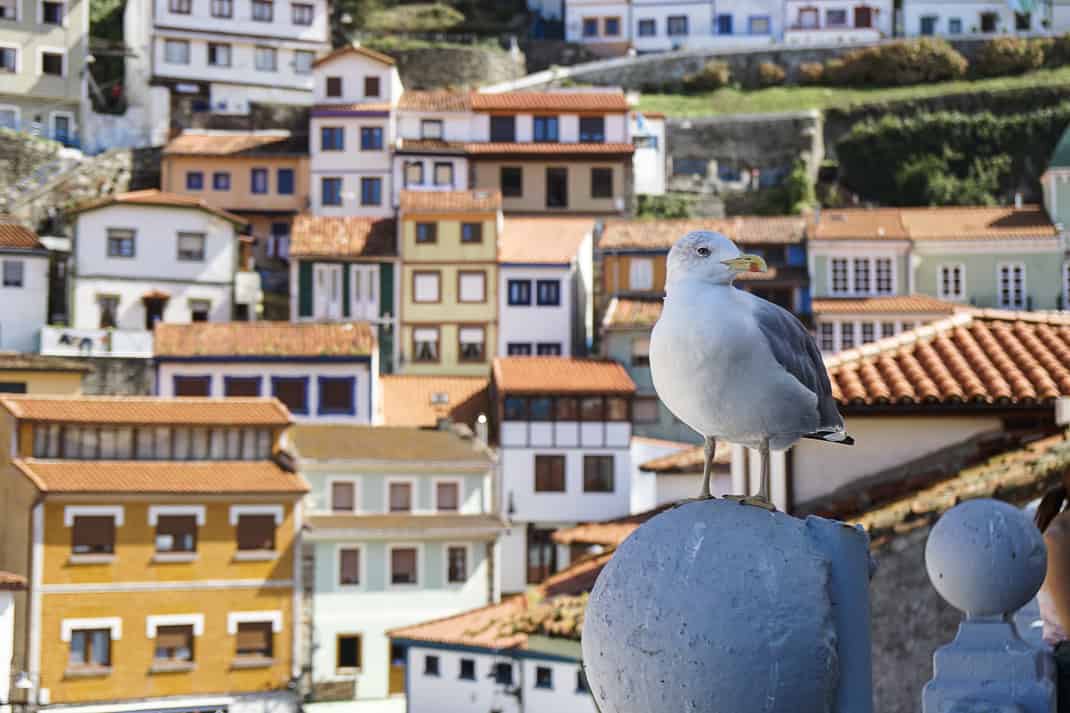
In fact, we nearly postponed it a third time. The weather forecast for last week called for rain. Every day. The possibility of rain hovered between 70-100 percent. Every day. Marina, my girlfriend but also an uber photographer, is a magician with black and white photos. She just doesn’t like getting soaked taking them. I had an important assignment this week in Rome. We almost punted.
We went. This is Northern Spain. One reason it’s off Spain’s well-beaten path is the weather is often like the backdrop in “Blade Runner.” Asturias gets 40 inches of rain a year and even in summer the highs are rarely over 72 with lows in the 50s. Asturias seems like Normandy with fewer graveyards. When else would we go? Besides, being an Oregonian I always say, “It doesn’t rain in the bars.”
Gijon isn’t easy to reach. We took a 7:05 a.m. flight 2 ½ hours from Rome to Madrid, waited 1 hour, 40 minutes for our 70-minute flight to Oviedo, Asturias’ capital. Then it’s a 50-euro cab ride for the 20-mile trip north to Gijon on the coast.
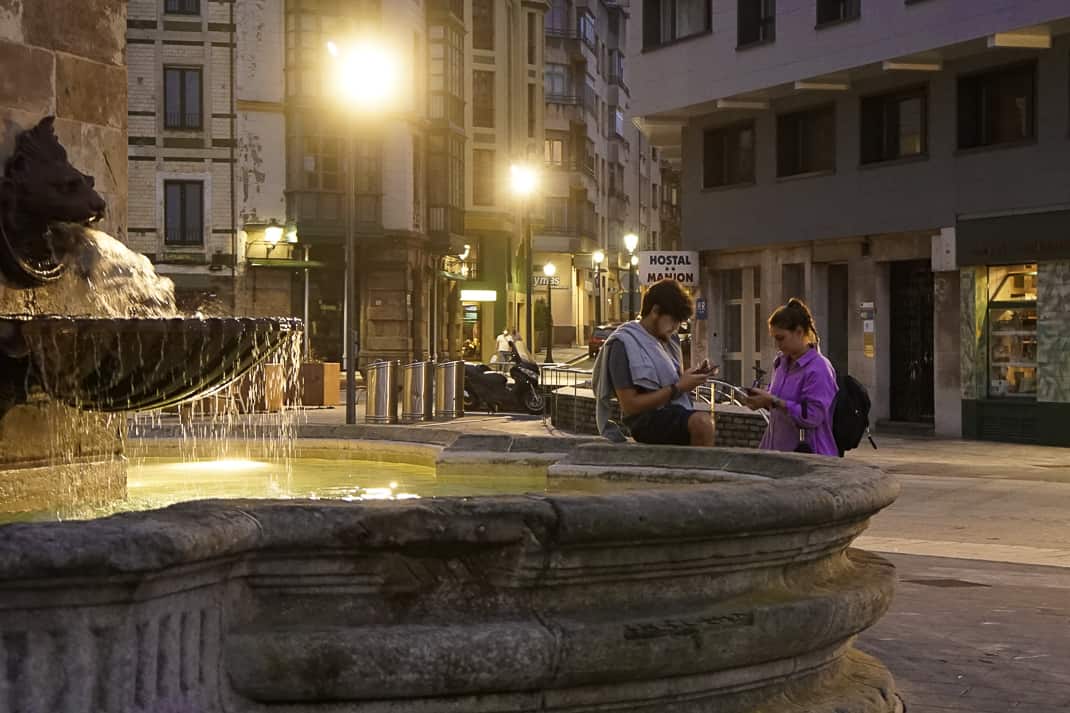
Gray, threatening clouds greeted us as the cab whisked us up the freeway. Asturias was kind of late to the tourist game. Gijon was a major steel town throughout the 20th century and the remnants remain. We passed numerous smokestacks billowing smoke from ugly factories.
But when our eyes passed the eyesores, we could see why Asturias eventually embraced tourism. Everywhere we looked were deep forests of oak, chestnut, birch and beech trees. In fact, Asturias has seven UNESCO biosphere reserves. It was the greenest place I’ve been in Spain. Yes, the rain isn’t the only feature of Asturias that reminded me of Oregon.
Then sticking up above the trees, just to remind us we were indeed in Spain, we saw a giant statue of a bull. Welcome to Asturias, it seemed to say. This is the Spain you never knew.
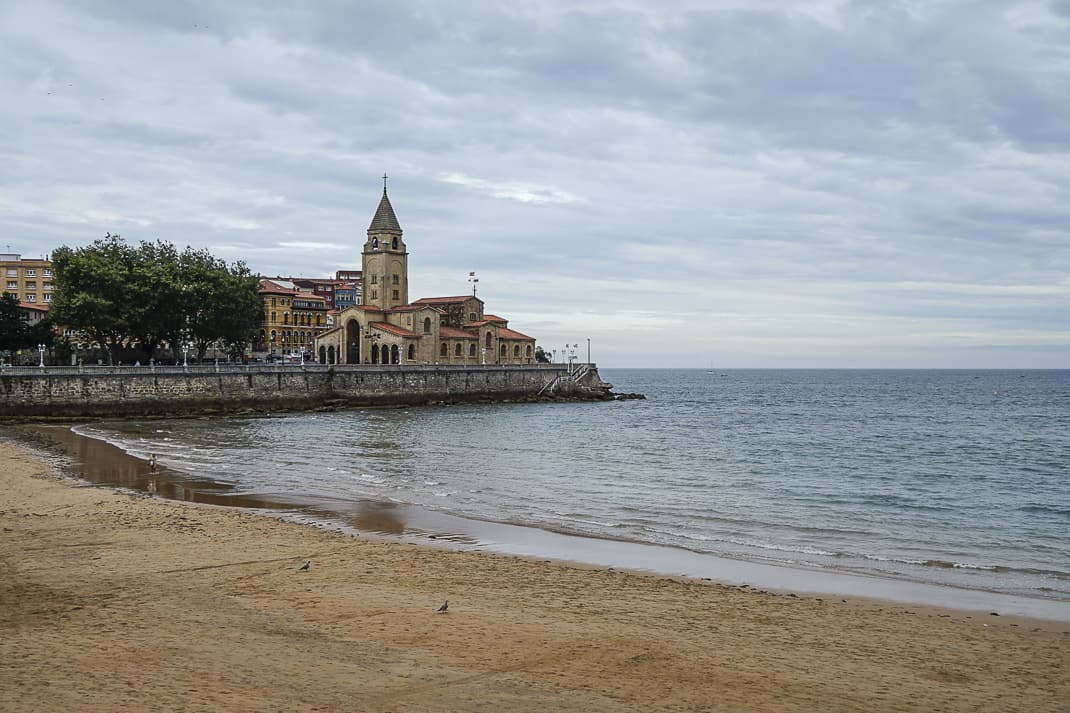
Gijon
Gijon is an odd-shaped city of 270,000. The sprawl of parks, long, straight boulevards and retail stores flow north to the sea. That’s where two long urban beaches flank a round headland sticking over the bay like a bobbing buoy.
This is Cimadevilla. It’s the old fisherman’s quarter that is now the ancient core and nerve center of the city. Narrow alleys wind up hills lined with small plazas and locals drinking wine and sidra, Asturias’ sickeningly sour signature cider drink.
Our Hotel Silken Ciudad Gijon, featuring a spa and massive buffet breakfast, sat just outside the dull and scruffy city center. Kicking myself for choosing amenities over location, I forgave myself after numerous 15-minute walks to Cimadevilla. It’s a pleasant stroll, past a dog park where dozens of happy canines chased Frisbees and each other and, on occasion, humped the available leg, whether it be mutt or man.
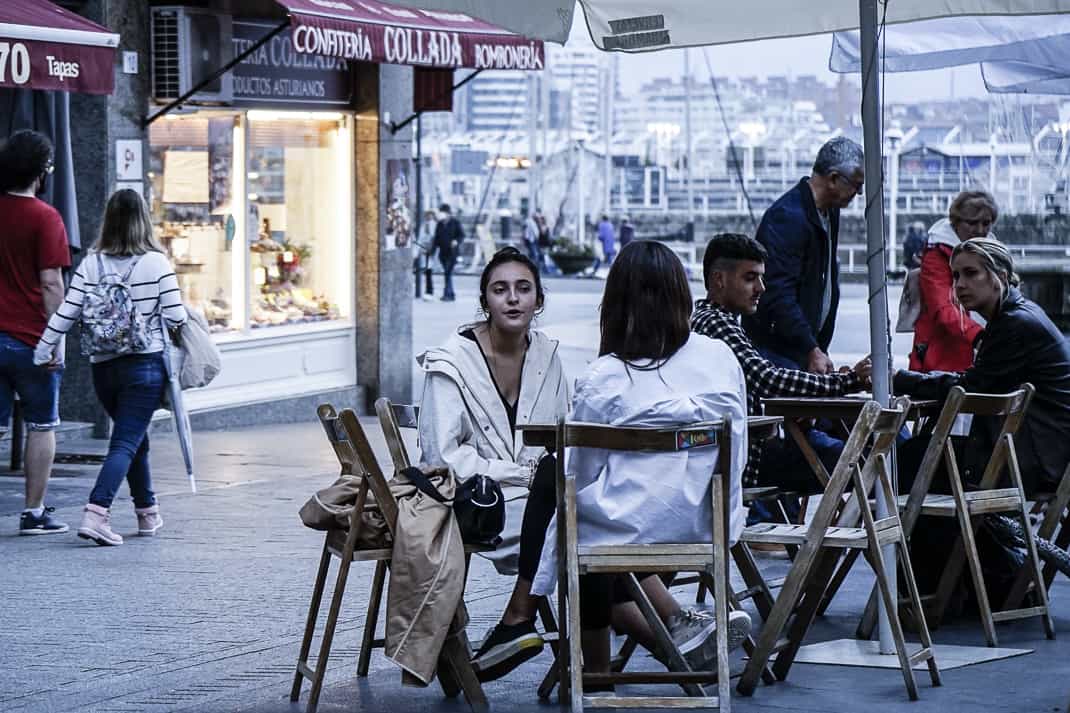
When we surfaced from the urban sprawl, a huge port greeted us. Hundreds of sailboats sat idle as dusk descended. It made Gijon look ritzier, wealthier, like this is a place where wealthy Spaniards go to retire.
We walked along the long, stone promenade past tony bars under big palm trees. We continued up a hill into Cimadevilla and ordered Ribero del Duero, a wine from Central Spain, at one of the casual bars dotting the Plaza Corrada. Trees still barren from the summer and tall apartment buildings of yellow cement and red brick provided a safe shelter from the strolling tourists along the port.
Middle-aged locals sat chatting with tall bottles of beer, glasses of wine or the plastic contraption that spits the sidra into your glass. An oldish hippy scolded his dog for humping another.
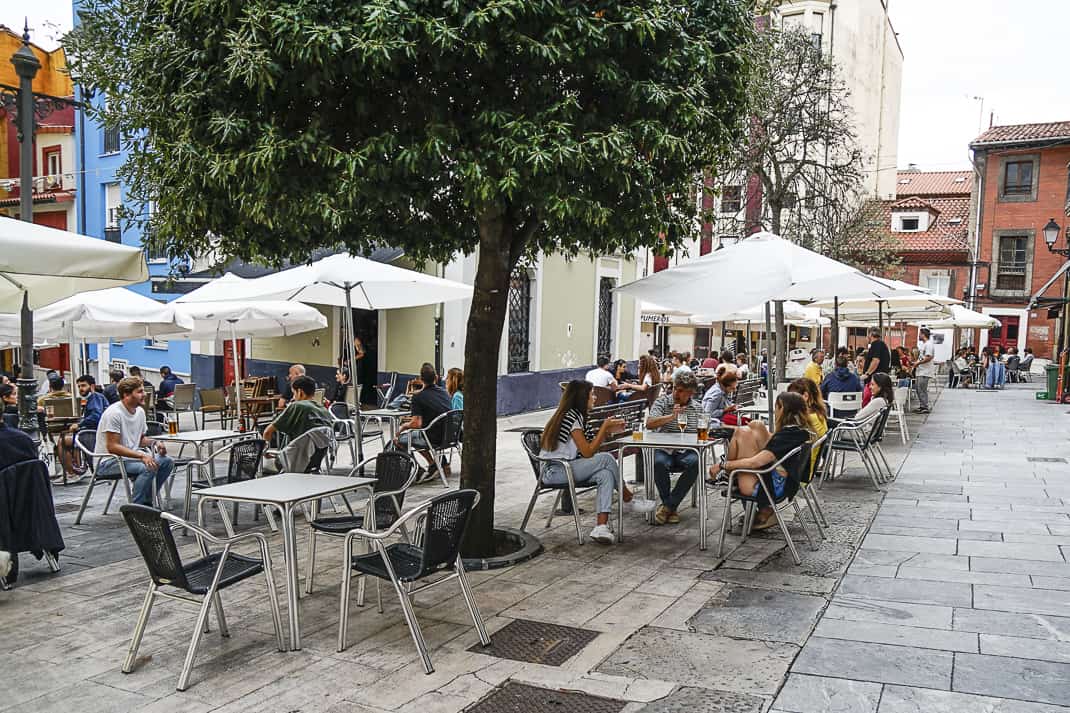
Despite the freezing sea near us and gray clouds above us, the temperature remained pleasantly in the high 60s. It was a tranquil place to kill an hour before dinner, the start of a gastronomical adventure I’ll detail next Tuesday.
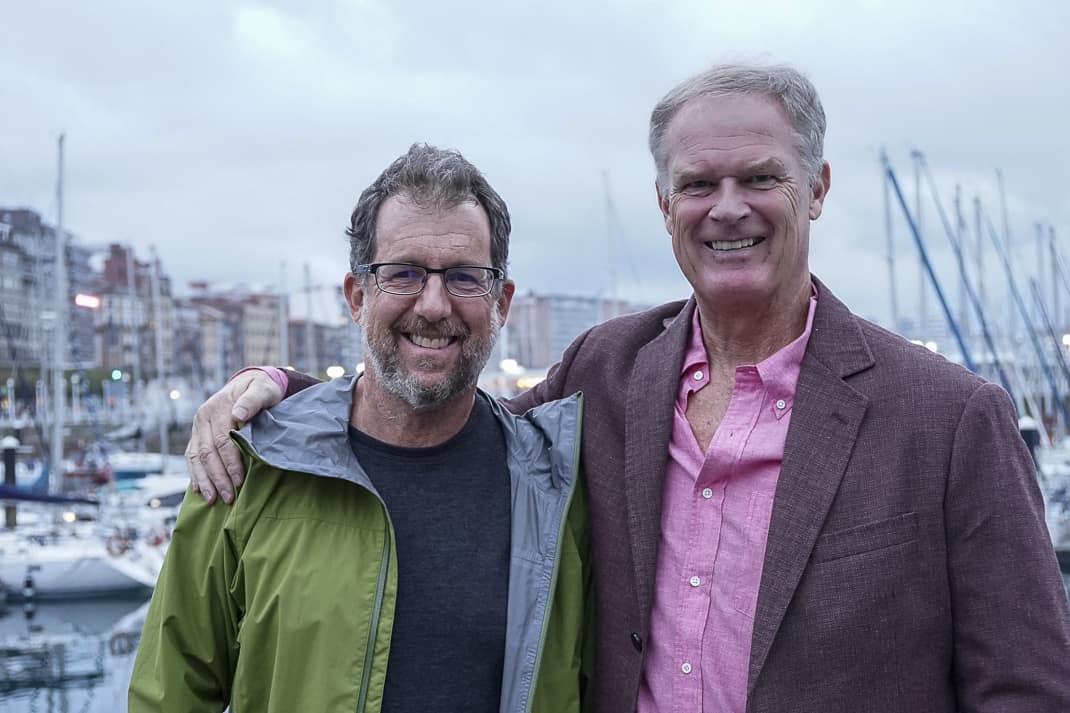
An American expat’s view
The next day was about the only time the previous week’s forecast was anything but libelous. Our morning walk to the port was interrupted by a cloudburst that soaked Marina’s stylish Italian boots and threatened her even more expensive camera. We huddled in a cafe drinking steaming cafe con leches and watching rain splat the pavement like a bull peeing on a flat rock.
Being an Oregonian, I find rain romantic. Peering through the raindrops that seemed like liter bottles of water breaking open, the bay was a misty blue-gray. It reminded me of a Monet painting I once saw in Paris.
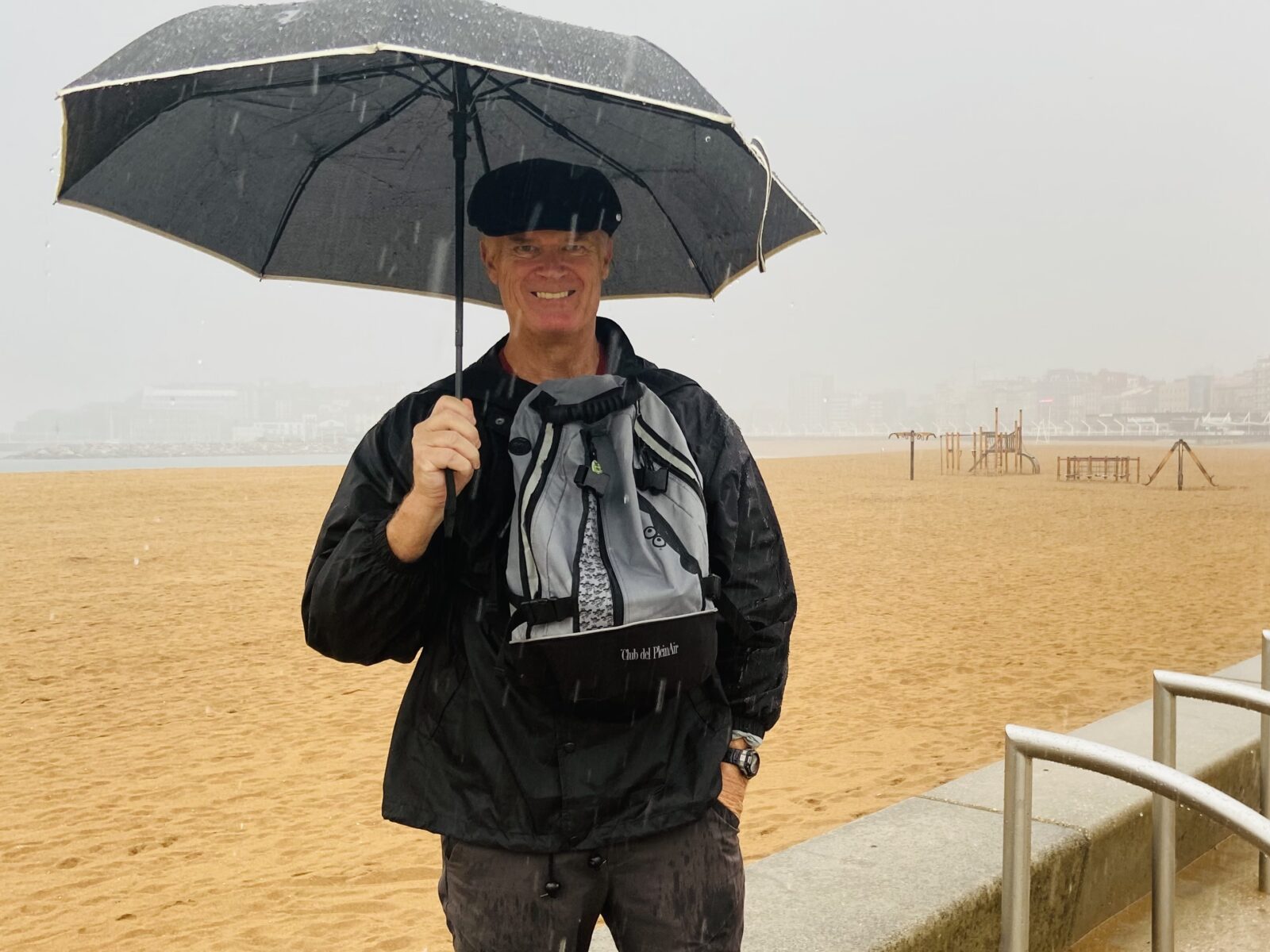
That night, we met Andy Hood and his wife, Maria Jesus, or M.J., as he calls her. Andy is from the Denver suburbs and an old cycling writer colleague who met M.J. during the Vuelta a Espana race 20 years ago. He has been in Spain ever since. They came up from their Castillion town of Leon, another underrated Spanish destination featuring arguably Spain’s prettiest cathedral and charming old town.
They drove the 90 miles north and met us in Plaza del Marques just off the port. It’s a picturesque spot next to Palacio Revillagigedo, a 17th century baroque palace that looks like a castle from the Moorish wars.
Fun fact: Asturias is the only region in Spain that was not conquered by the Moors who ruled the peninsula from 711-1212. In fact, standing tall in the square in front of the palace is a statue of Don Pelayo, the founder of Asturias who led the victory over the Moors in the 8th century. The statue, in a final joust into the Moors’ livers, is made from the Moors’ bronze cannons they left behind in defeat.
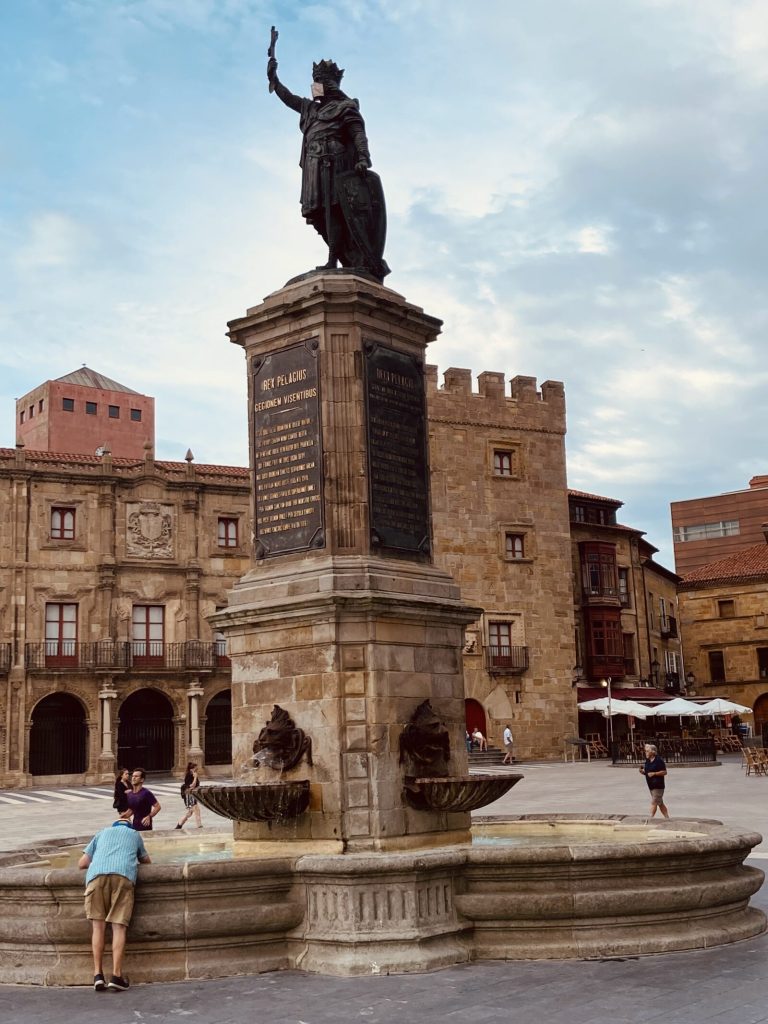
I wondered if the Moors had conquered Asturias, whether they’d be as amused as I was by the flock of pigeons who kept dive bombing our dish of nuts at the Entreplazasas Bar in the shadow of ol’ Don’s statue.
Andy and M.J. arrived and took a seat. They’re both in terrific shape. They ride their bikes all over Northern Spain, including Asturias where Andy would occasionally tease me with videos of long stretches of empty beaches and spotless sand.
We’re both hopelessly in love — and grateful — to live in Europe and agreed the bottom of the nearby bay would be our preferred destination if we ever had to move back to a United States that has been unraveling for five years.
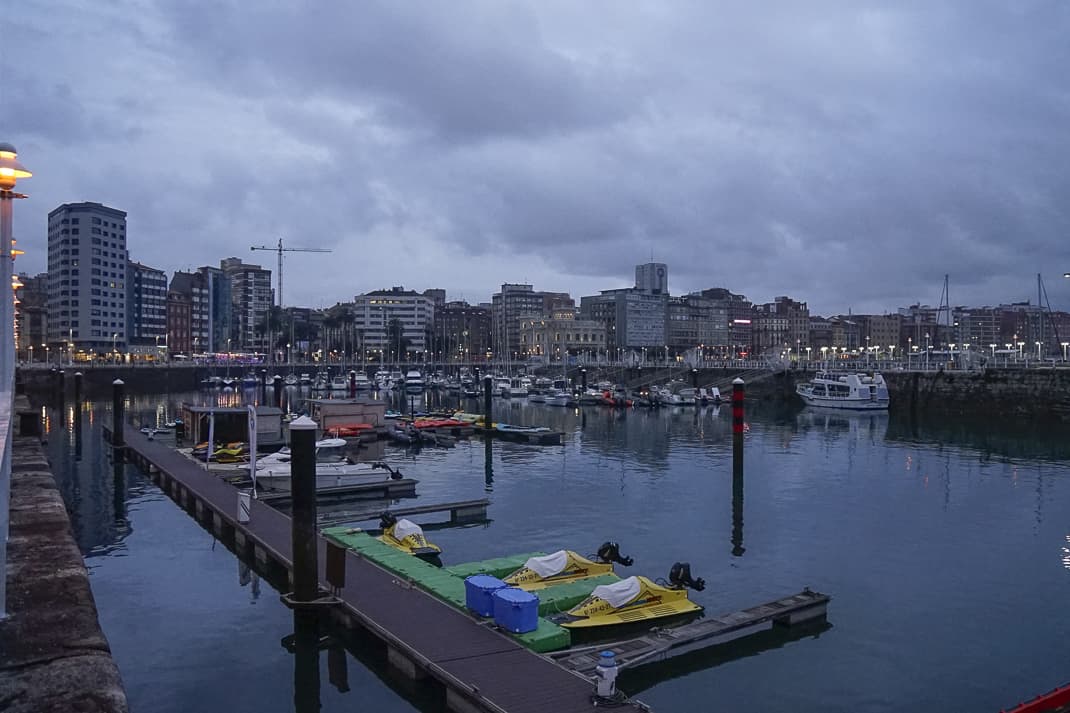
But we both have different reasons for loving Europe, though they’re similar. Spain is to Italy what pizza is to paella. They’re both delicious. They both make you happy. It’s just a matter of what you’re in the mood for.
I asked him why he likes Asturias.
“I like Asturias because there are no Americans here,” he said with a hearty laugh. “It’s completely undeveloped touristically. Because it’s cold water and it’s rainy so there’s no big hotels, no massification. The Mediterranean is ruined in Spain in a lot of parts.
“So (Asturias) is like the wild Spain. It’s the Green Coast. It has the last wild beaches.”
We later took a stroll through the ubiquitous Plaza Mayor to the boardwalk above Playa de San Lorenzo. It was dark by then and in the yellow light, it truly looked like one of the three or four most beautiful urban beaches in the world.
But this, apparently, was nothing.
We were renting a car and going west the next day and east the following day. Andy prepped me on what we would see.
“The contrast between mountains and sea,” Andy said. “It’s probably like Oregon for you. The mountains go straight into the sea. It’s all spectacular.”
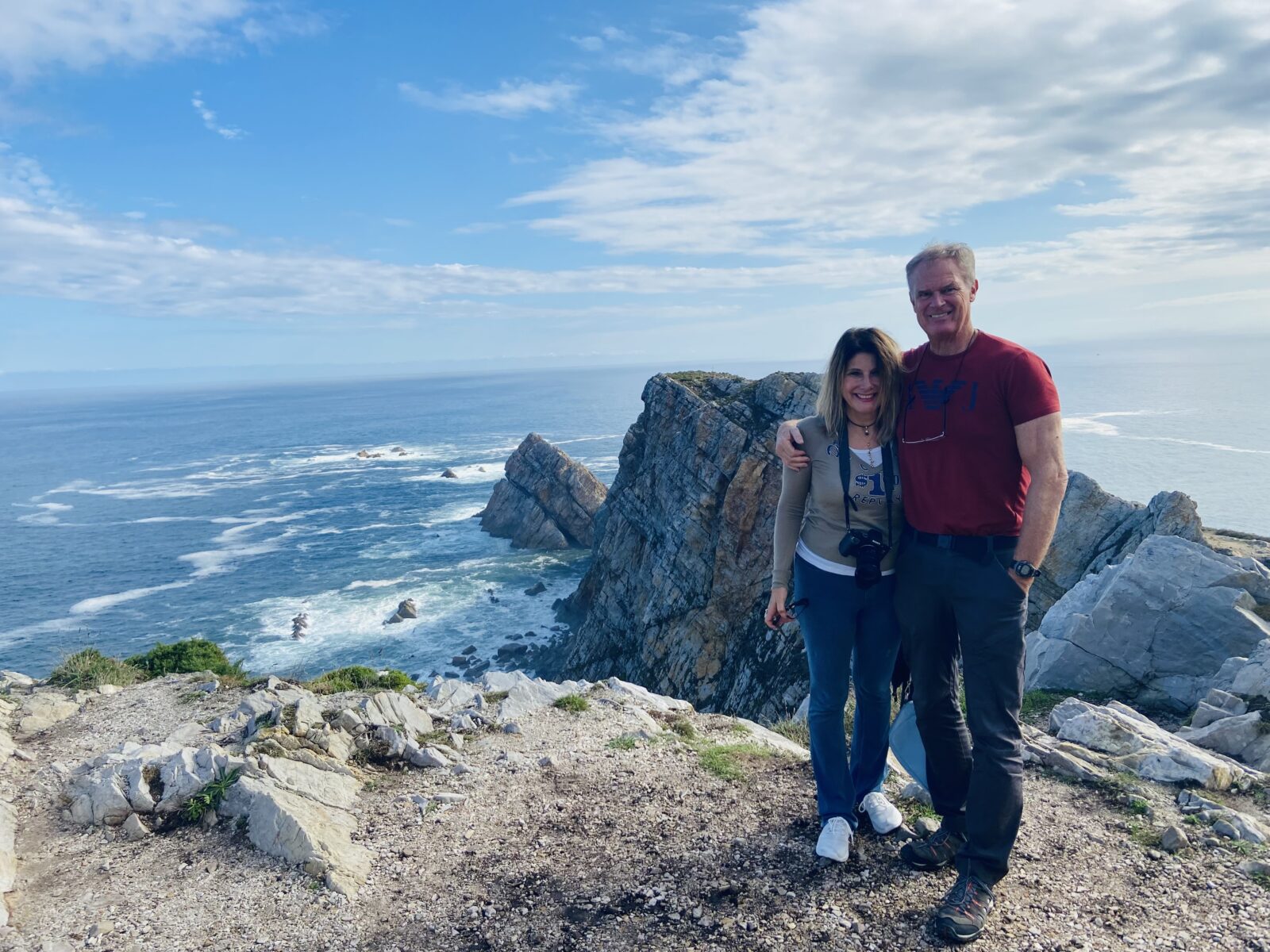
Going west
We hopped in our comfy rental car and headed for our first destination on Spain’s northern coast. The main road zigs inland through forest and zags along beautiful beaches with the cobalt blue bay nearby. Our first stop would be Cabo Penas, which juts into the bay like an approving thumb’s up.
Funny, where was the sea? Why was our cellphone’s GPS sending us down narrow two-lane rural streets that sometimes shrunk into dirt roads barely wide enough for our compact car and a passing goat? We passed chickens, grazing cows, vast meadows. We saw old couples taking morning strolls past modern homes.
The familiar salty air of the sea was merely a memory of the night before.
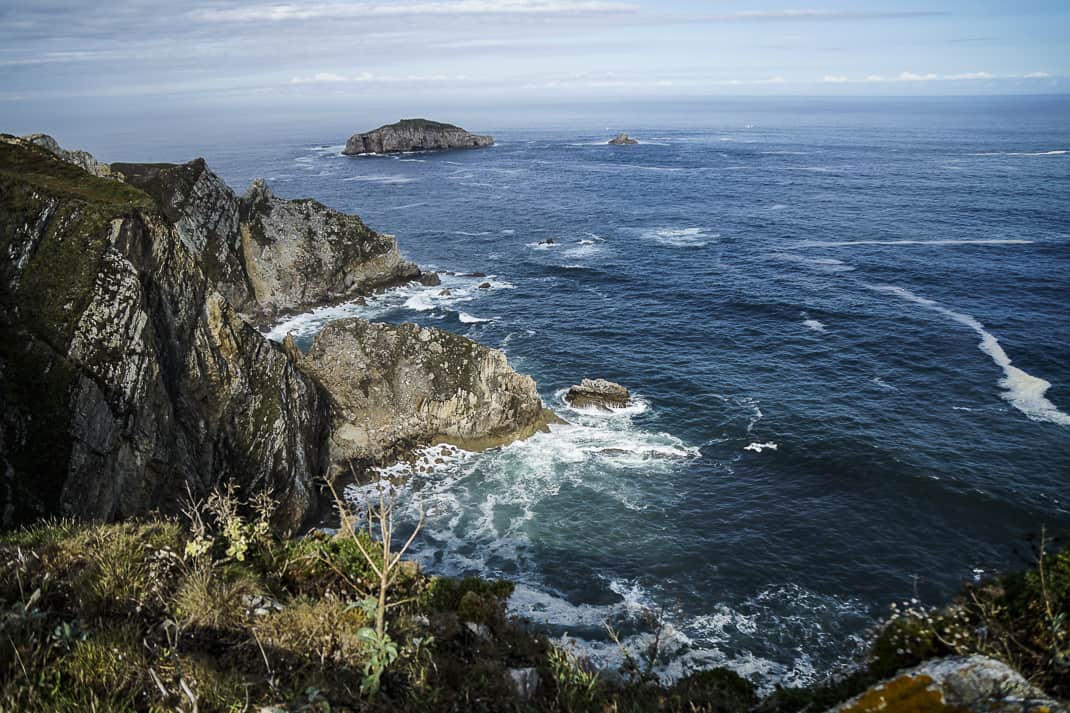
When we crested a hill, we finally saw the bay beyond. Cabo Penas features an odd, short, stone lighthouse attached to a two-story white house that looked long uninhabited. A big snackbar stood closed, probably since the pandemic began.
No matter. We didn’t need a cafe con leche to appreciate the stupendous views from this point. Big, steep cliffs maybe 300 feet high stood guard over jagged rocks sticking up from through the surf below. The water was green but grew progressively brighter blue the farther out to sea my eyes drifted.
The forecasted rain was nowhere to be seen. Sunny 66-degree weather shepherded us down the wooden boardwalk past information panels of the fauna and flora. At the end of the walk, a strong iron gate separated us from a sheer 1,000-foot drop. We could hear the ocean crashing from that far up. The sun shined a silver light through the random clouds, making the bay sparkle. We shared the views with only about 10 other people, all Spanish.
Too dangerous to climb down; too cold to swim. I didn’t care. It was raw, natural beauty. It’s where Mother Nature beats up the intrusiveness of man’s commercialization.
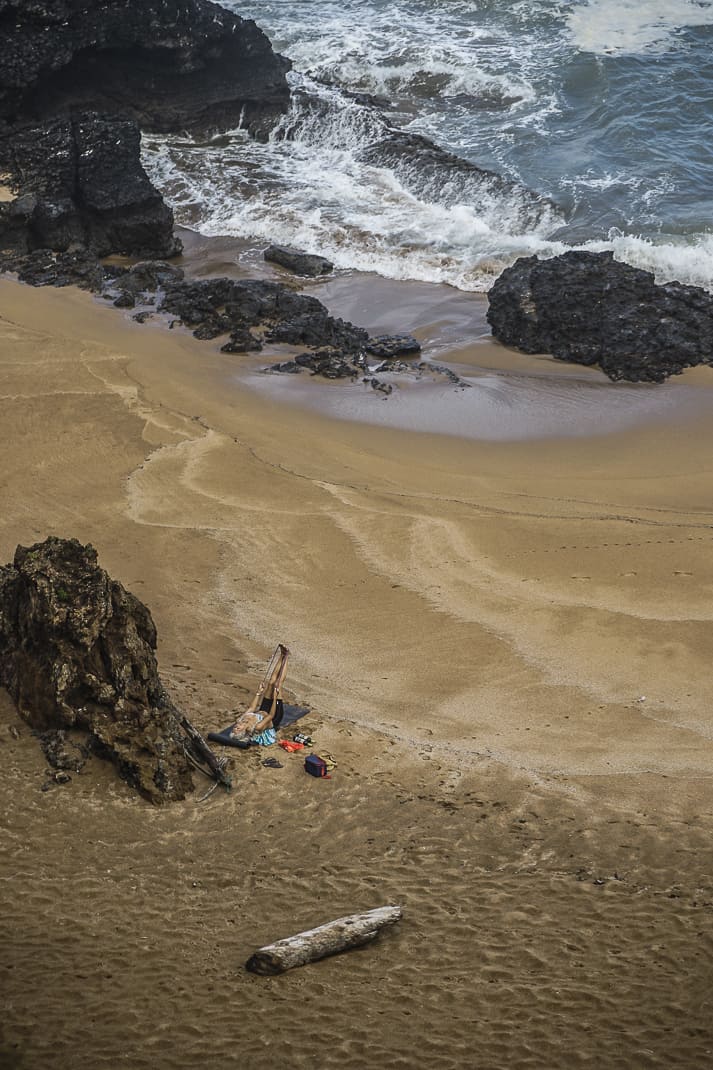
Inspired, we drove farther west just a few more miles. It was late morning and fog still hovered under the summits of the forested hills. We drove up a short gravel road to a big grassy field. A mountain biker sat in a folding chair eating a piece of bread and sipping coffee. We saw no one else.
Below us a few hundred feet was a huge expanse of spotless, golden-sand beach of Playa de Verdicio. The only person on the beach was a gray-haired woman doing pilates.
Huge, jagged rocks fielded a series of big, crashing waves. We climbed to the top of a small hill closer to the sea and saw another beach on the other side of a rock jetty. Not a soul could be seen.
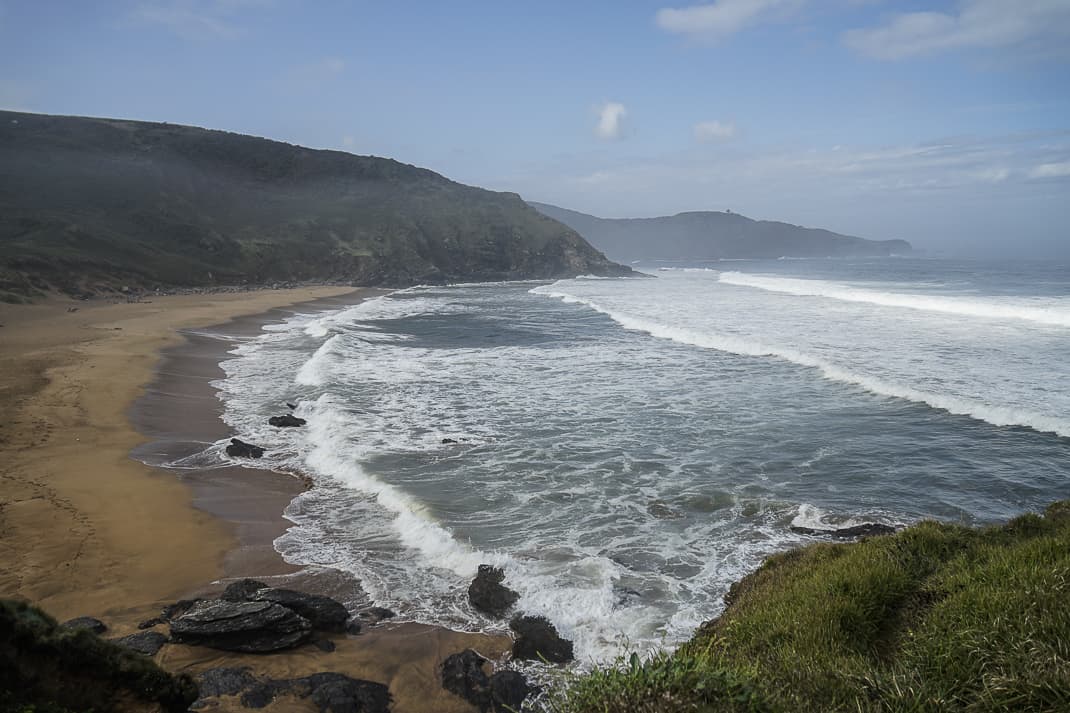
It made me appreciate Andy’s lament that in summer on Formentera, one of Spain’s Balearic Islands, you hear more Italian than Spanish.
We then continued to what we expected would be the crown jewel of our day. The town of Cudillero is considered the prettiest fishing village on the northern coast. It would be the perfect place for lunch where a string of seafood restaurants wraps around the pretty harbor.
We veered off the main road and wound our way down the narrow street past orange-tile roof houses in pastel colors. It felt like I was driving through a water-color painting.

The road emptied past a string of restaurants and onto the harbor, a modest shelter for a few small fishing boats bobbing in the dark blue water. Tall, snow-white buildings with bright red, blue and green trim ringed the port.
We crossed a bridge to park and came back to eat at the closest restaurant to the harbor. La Paloma had terrible service. Numerous young, scowling kids ran the place with the indifference of workers waiting for the tourist season to end.
But my big clay bowl heaping with fresh, marinated mussels and an ice-cold beer put me in a very forgiving mood. Later we ascended the windy main road to peruse stores selling all things Asturian, from chocolate to sausage to the ever-present bottles of sidra that covered an entire shelf.
It was 72 degrees and sunny. I’ve made some bad decisions in my travels before but coming to Asturias was not one of them.
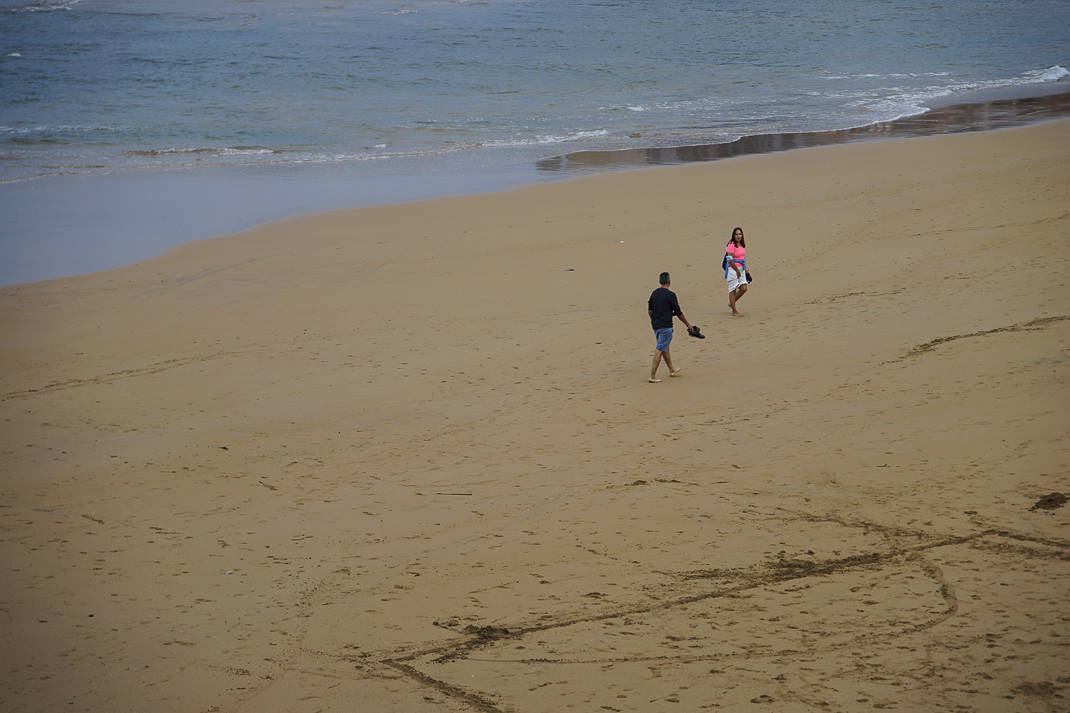
Going east
As I advise people who visit the Vatican Museums to go straight to the Sistine Chapel and work your way back, we made a beeline for the nicest beach east of Gijon. The 80-mile drive to Playa de Meron was even prettier than the Vatican Museums. We passed through Picos de Europa National Park, with thick forests fronting tall tree-covered mountains. In between the mountains were deep, green valleys.
Asturias is greener than Ireland on St. Patrick’s Day.
We emerged from the tree-line drive at Playa de Meron which has a big, free parking lot with a few spaces. Again, this is Northern Spain in September. It was mid-70s and sunny but the water is cold enough to drink.
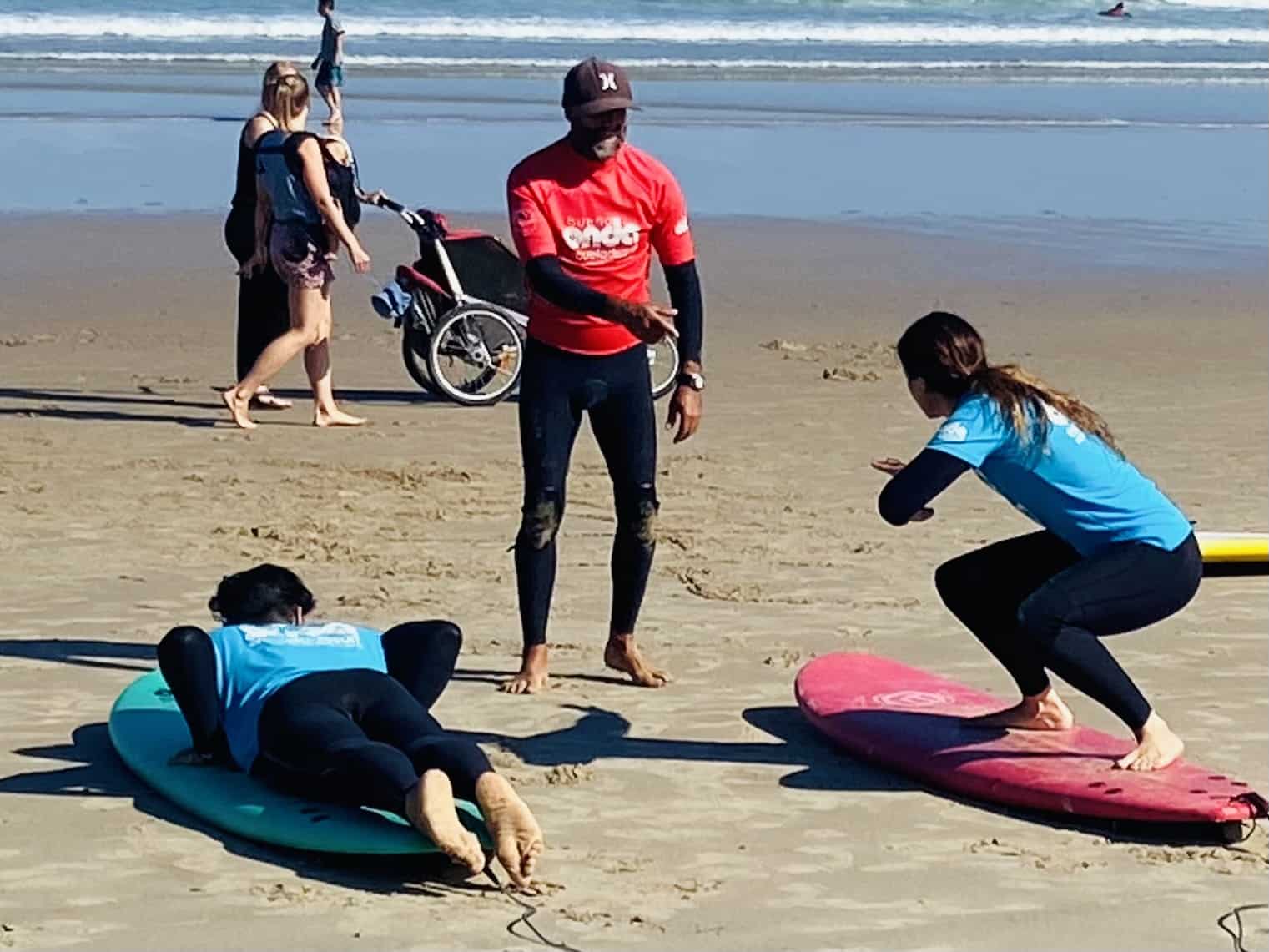
However, it didn’t stop dozens of surfers gathering on the wide, long, pebble-free beach. It also had no lanais chairs, beach bars or immigrants shucking costume jewelry and inflatable toys. It could’ve been my Oregon Coast but I’ve never seen surfing students in matching tops getting instructions from surfing school mentors.
Seasoned surfers warmed up and stretched in the sand. Others in the water were carving up the small but consistent waves. We had a lovely passeggiata along the surf, holding hands and feeling the warm sun on our faces.
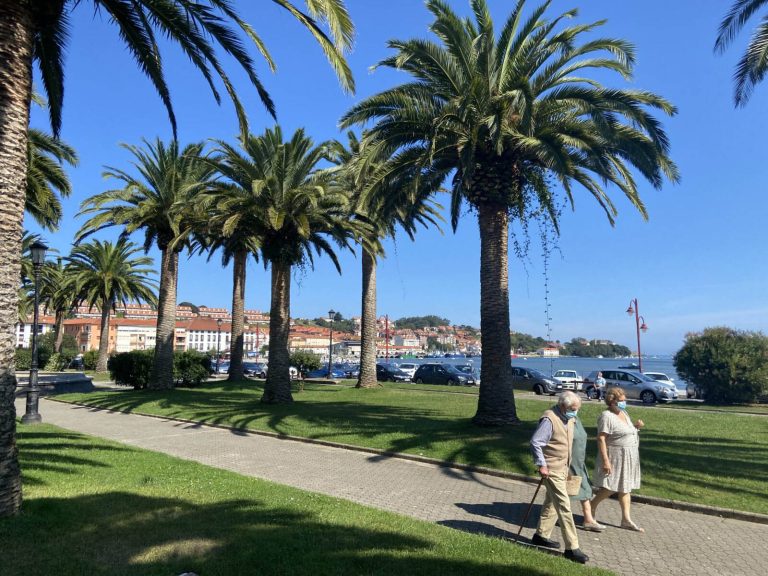
The added benefit of Playa de Meron is it’s next to the prettiest town we saw in Asturias. San Vincente de la Barquera is technically just over the Asturias border in Cantabria but we’ll count it anyway. This town of 4,000 wraps around a huge harbor between two long inlets. We had a beer in one of the long line of outdoor restaurants and stared at the yachts in between the string of palm trees. Pastel-colored buildings line the gentle hills above the harbor.
But for a beer with a view, one must go to the cheapest beer joint in Asturias. Andrin Beach is a beautiful, isolated beach of about 200 meters. To reach it, one must take a windy road down from the main highway but we got stopped halfway down by one of the best views in Northern Spain.
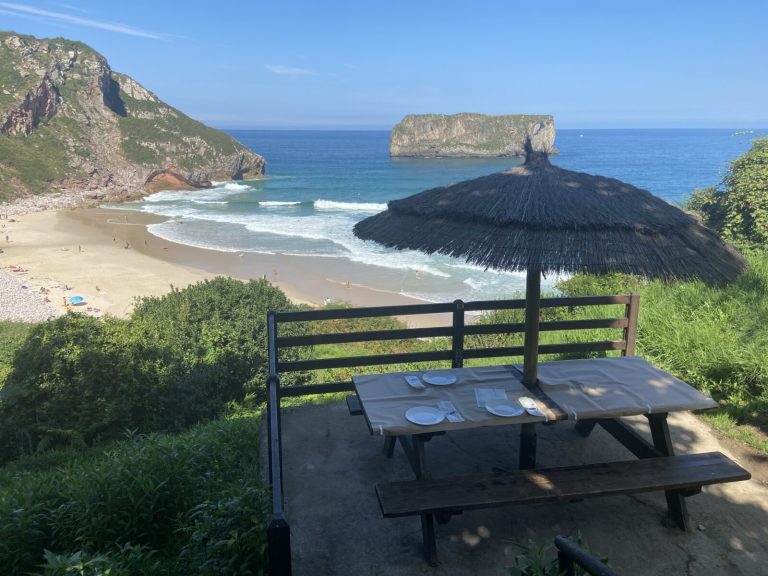
A crude chiringuito (beer shack) had picnic tables with thatched umbrellas overlooking the beach. I ordered a bottle of cold beer for 2 euros and watched the few sunbathers a couple hundred feet below.
We would’ve ordered food. (What food wouldn’t taste good with a view like this?) but we took Andy’s restaurant recommendation that he had tortured me with in past videos. The beach town of Llanes features Mirador de Toro, an elegant seafood restaurant perched on a hill just above the small picturesque beach.
White tablecloths and fine dining ware greeted us as we took our seats in brilliant sunshine. Beautiful, well-heeled Spaniards sipped wine behind massive plates of fish carcasses and empty shells. I will go into more detail about the heavenly seafood paella in next week’s blog. Just suffice it to say it justified the most expensive restaurant we went to in Asturias.
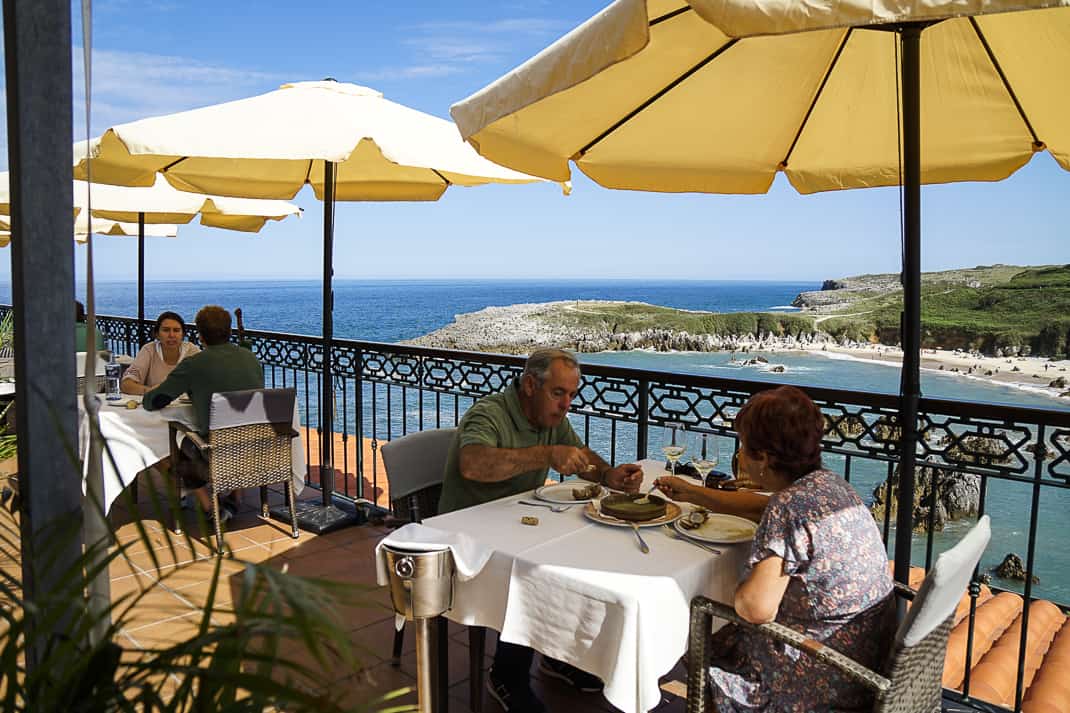
The view may have matched it. We saw the mountains of Picos de Europa behind terraced green hills and a forest that comes right down to the perfect sand and sea.
“This is a strange place,” Marina said, looking at the forest. “I look there and I think I’m in the countryside. But if I turn my head I’m at the beach.”
On the drive back, the skies opened up for only the second and last time of our trip. My rental car nearly hydroplaned around corners. The forecasters were wrong. The New York Times was right.
Asturias really is a place to go.
In case you want to go …
How to get there: Iberia has numerous daily flights of 70 minutes from Madrid to Gijon starting at 92 euros round trip in fall.
When to go: July and August are ideal for swimming. The water isn’t quite as cold but beaches are painfully crowded with Spanish tourists. Traffic is horrific. However, it is the driest. Rain only seven days a month in summer, from 10-12 days all other months. Temperatures range from 55-75 from June to September, 41-56 in winter.
Where to stay: Silken Ciudad Gijon, Bohemia 1, 34-985-176-112, www.hotelciudadgijon.com, hotel.ciudadgijon@hoteles-silken.com. Big, spacious rooms with a lobby bar. Spa with indoor pool and Jacuzzi. Big breakfast buffet included. It’s about a 15-minute walk from sea. We paid 88 euros a night for four nights.
Where to eat: Restaurante Ciudadela, Calle de Capua 7, Gijon, 34-985-34-7732, www.restauranteciudadela.com, 12:30-4 p.m., 8 p.m.-midnight Tuesday-Saturday, 12:30-4 p.m. Sunday. Excellent, stylish place near sea for traditional Asturian cuisine such as the trademark favada, a stew of sausage and soft white beans.
Mirador de Toro, Av. Ctra. de Toro 42, Llanes, 34-985-40-882, www.miradordetoro.com, 1-4 p.m., 8:15-11 p.m. Elegant, romantic high-end restaurant with beautiful view of beach and sea. Excellent fresh seafood from 16-34 euros.
For more information: Gijon Turismo, Espigon Central de Fomento, 34-985-34-1771, www.gijon.info. 10 a.m.8- p.m. May-October, 10 a.m.-2:30 p.m. and 4:30-7:30 p.m. November-April. There is an information booth in summer at Playa de San Lorenzo.

